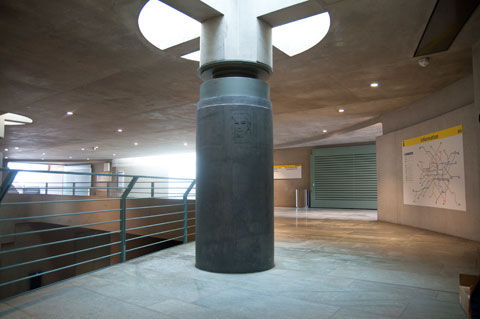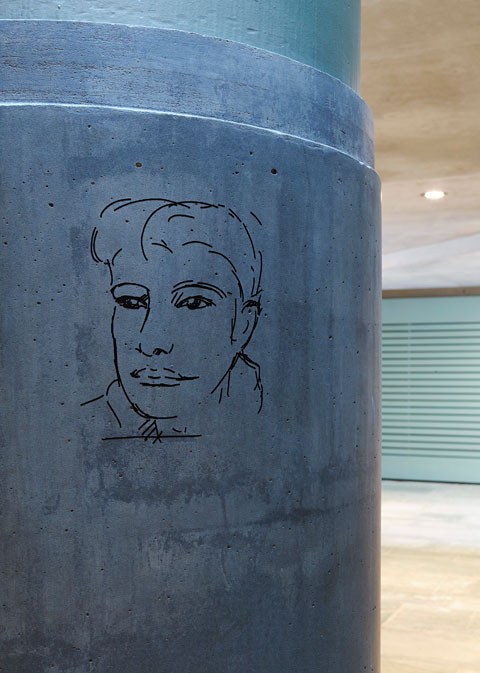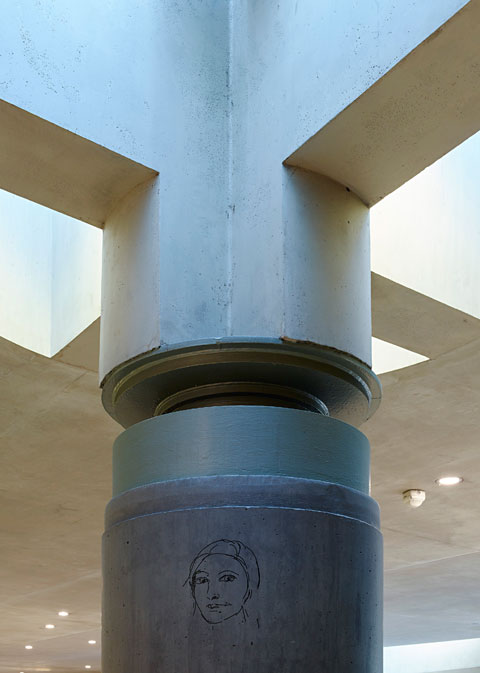STIMMEN / VOICES
Passengers who are approaching one of the four corner columns on the platform of the BUNDESTAG subway station trigger with their movements an interactive audio device. Thus audio files are being displayed.
On each of the four columns a different voice can be heard ¬and sketches at eye level are creating a visual reference.
A male voice can be heard from the corner column to exit II / 1, singing a love song in Kurdish. I met the singer in 2015 in the emergency accommodation Alt-Moabit – today he has moved out there and lives with his family in Berlin.
In the search for interview partners to my question whether the respective interviewee would have “a voice”, I have gotten songs as an answer. This taught me, that having a voice doesn’t necessarily mean to discuss or talk, but it evidently means to be able to sing. I will never forget this lesson.
My original idea of taking interviews on the subject of voting and having a voice – in context of the group exhibition Europa, has gotten a new twist and I felt the idea of singing even more convincingly. Discourse, discussion, and argumentation on an abstract and cognitive level was replaced by the presence of the voice itself.
On the corner columns to the exit II / 2 and I / 2 children’s voices sound. They sing us “Ten little fish that swim in the sea …” and “My world is beautiful …”. But these are not some Classical songs sung by German children in a primary school. For several weeks Lupo – a sound artist and friend – has been installing a singing cabin in the reception room of a refugee centre. People living there could use it to record, listen to, and delete all kinds of sounds and singing. The children have been using this opportunity. They had recently been arriving with their families in Germany, and went through war and flight experiences and learned these songs at their new German schools.
At the corner column to the exit I / 1 a female voice sings a story of a historical struggle between good and evil in Arabic. The professional singer texted, composed and sung this piece. Originating from Syria, she lived in Italy and later on moved to Berlin where she has been living now for several years. We have become acquainted within a network-meeting of Syrian and German artists.
The Singers:
Albin
Flamur
Hala
Jaber
Nadine
Razan
Rinessa
With the support of Kirstin Frohnapfel, Mohamad Naim und Youssef
4 Sets: Audiodevices, MP3 Player, SD Cards, Soundfiles 4 Portraitdrawings plottet 30 x 30 cm. Presented at the group exhibition EUROPA curated by Francine Eggs and Andreas Bitschin 2016, photography: Rudy Decelière and Holger Friese


